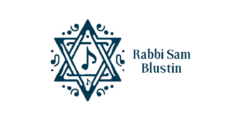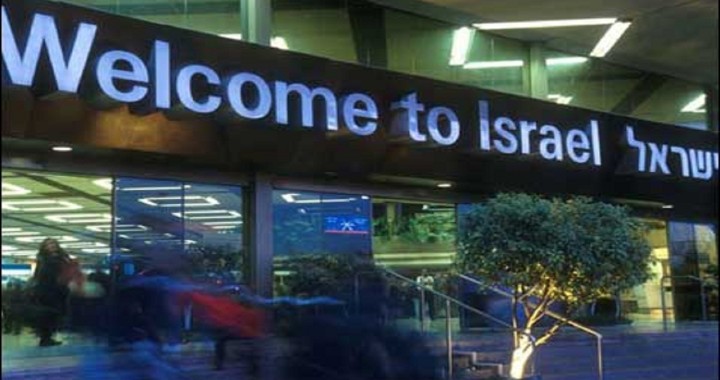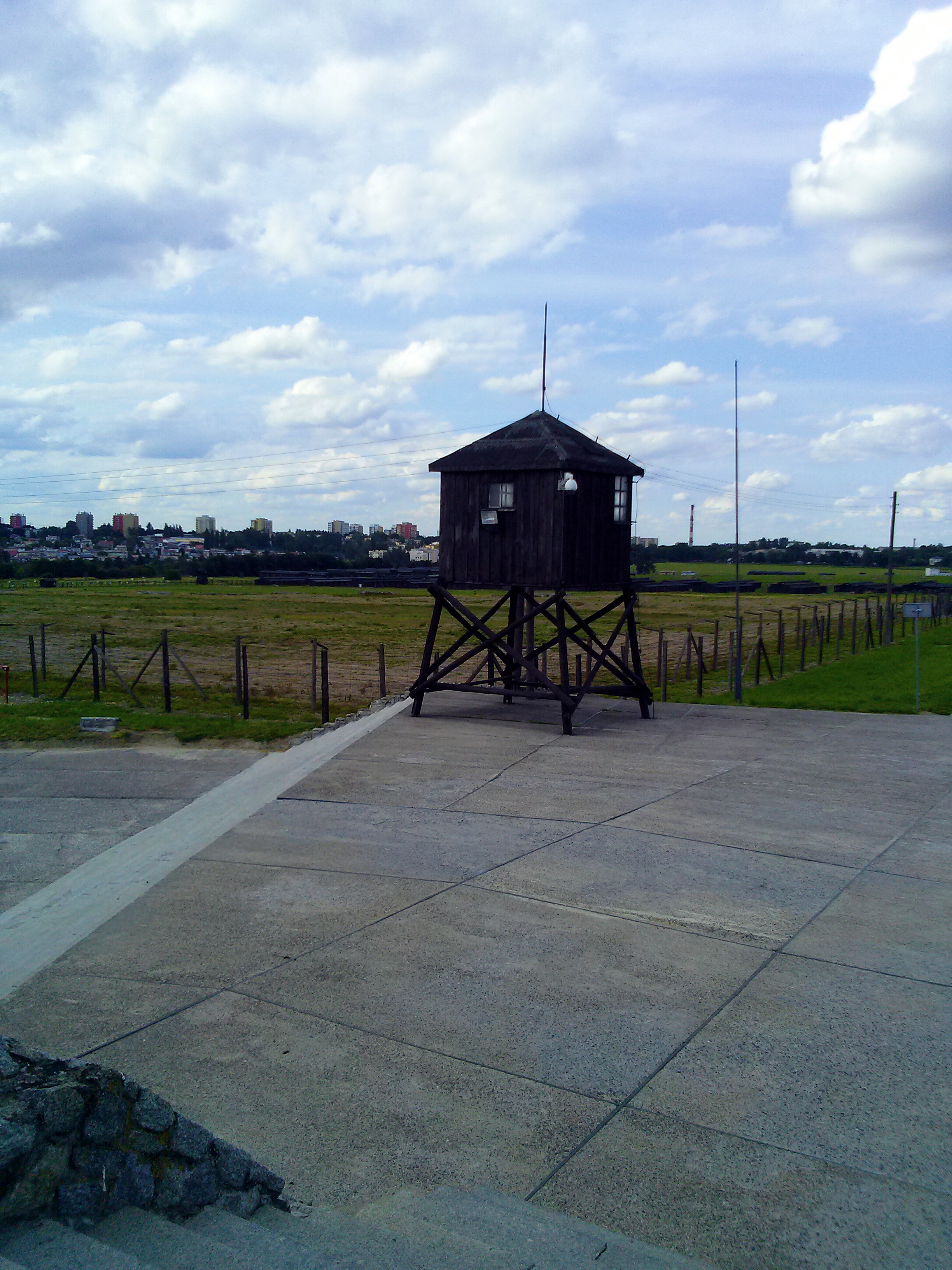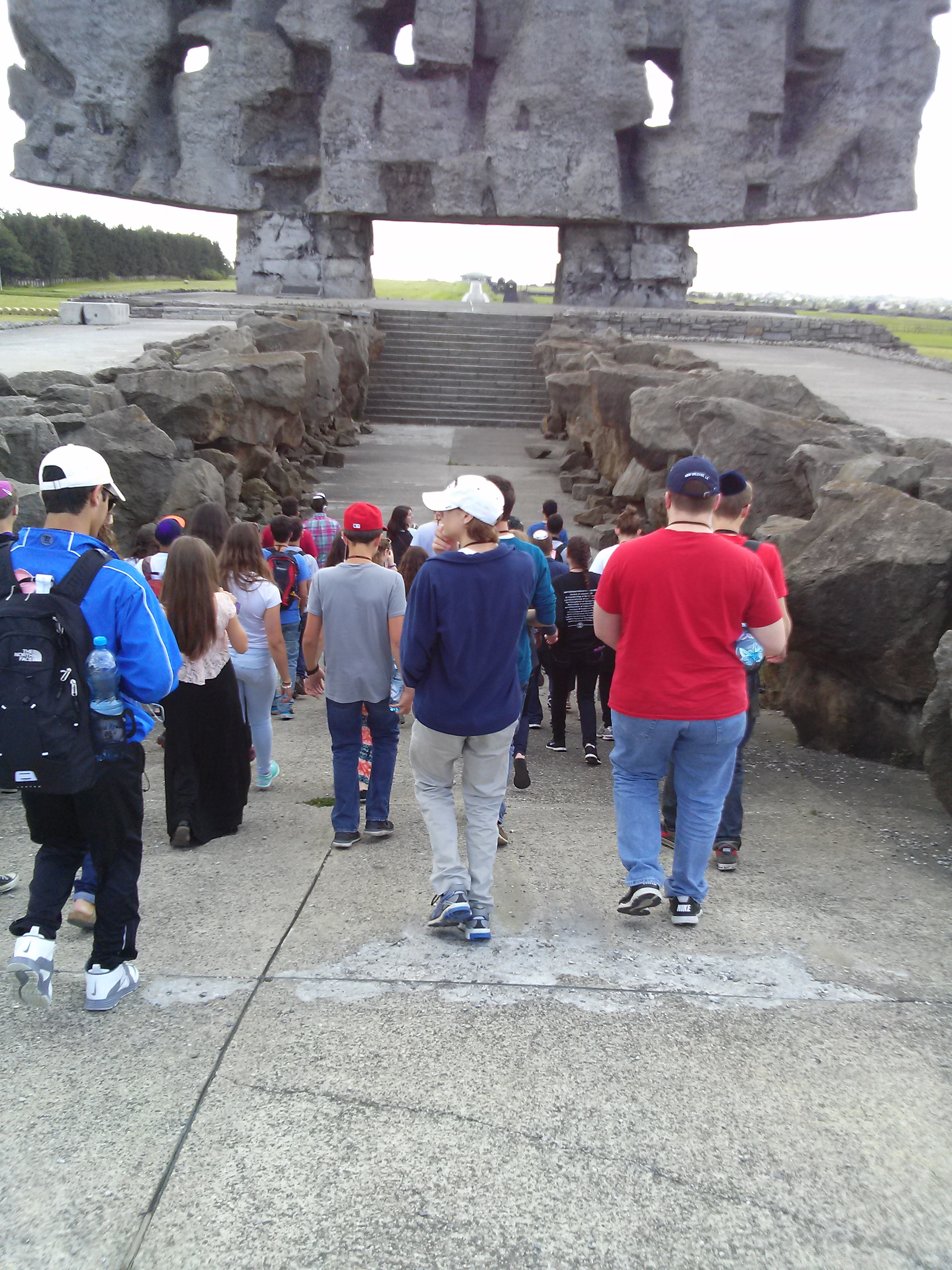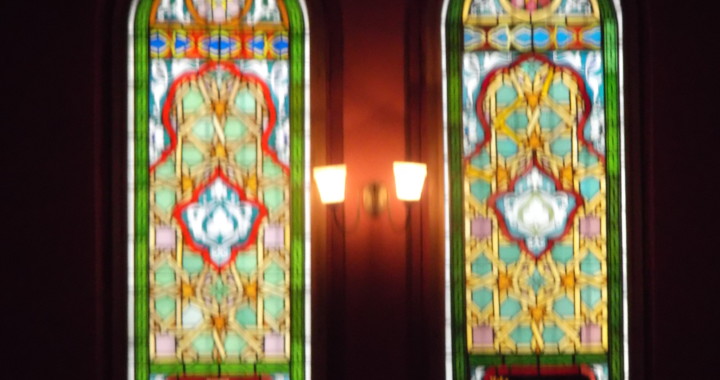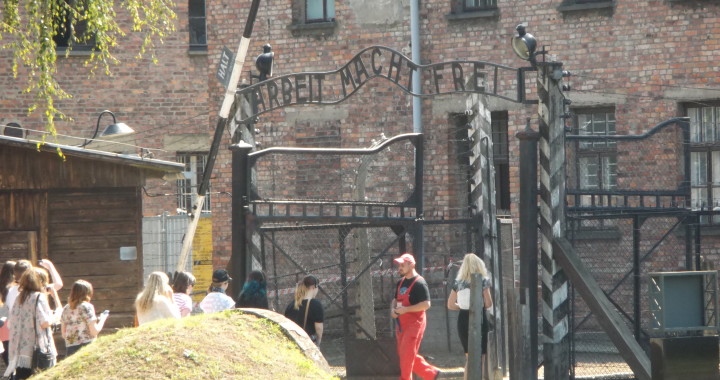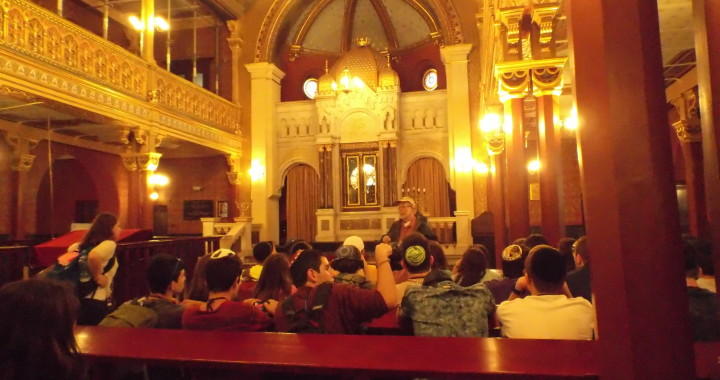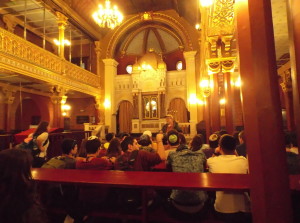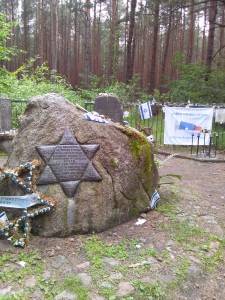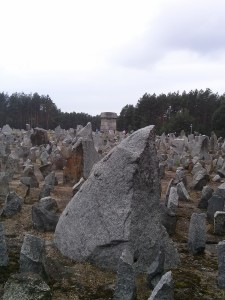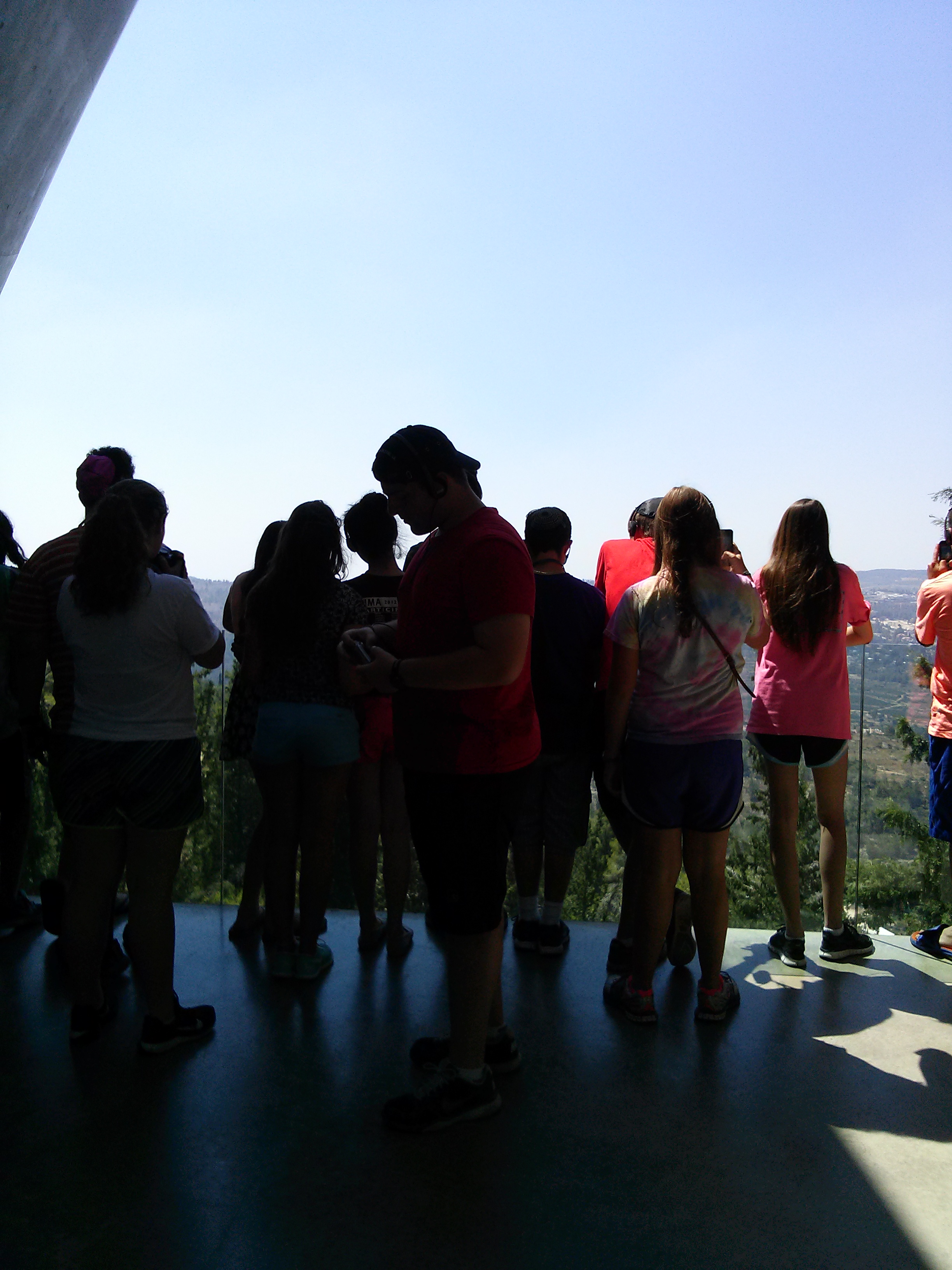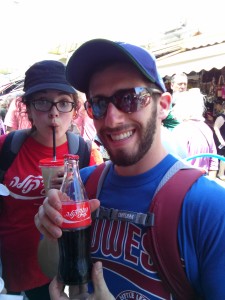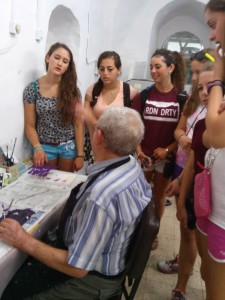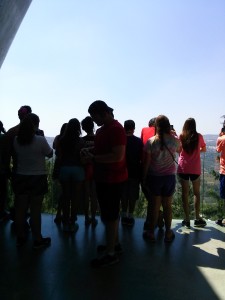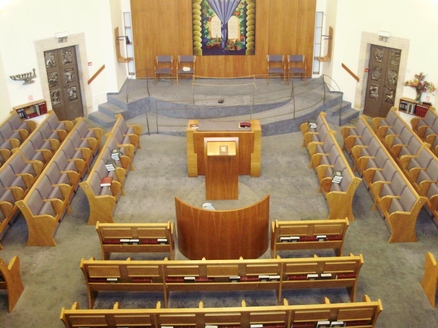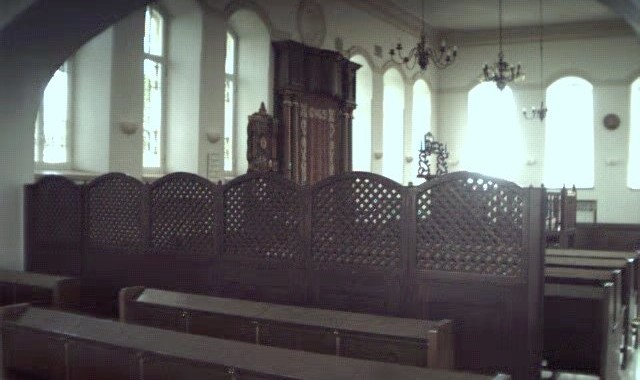Welcome to my Israel blog! Over the next year, you’ll be able to follow my travels as I shepherd 42 high school upperclassmen through a week in Poland and 4 in Israel, as well as my own personal adventures traveling and studying in Israel at the Conservative Yeshiva.
I sit here on the plane to Newark, NJ, just having left my family, ready to begin leg one of this journey: USY staff training. I don’t believe my mind has quite processed the fact that I’ll be in a foreign country for a year, but I’m sure that will come soon. Until then, I guess it’s best just to keep plowing ahead into the unknown, taking the challenges as they come!
More to come, so check back frequently for new posts!
L’hitraot, or until next time,
Sam
Tag Archives: Israel Travels
A Journey From Darkness To Light
Today was the first full day of our Poland Israel trip, and it was jam packed. We woke up in Warsaw, and continued our tour learning about Polish Judaism prior to World War II. We learned about the Warsaw ghetto, and stopped at some of the few remaining sites still standing from after the uprising, as well as visited many of the monuments erected in honor of our heroes.
We ended our walking tour at the new History of Polish Jewry museum, where we became the first USY group ever to get a tour there. We learned about the rich history of the more than 3.5 million Polish Jews who served in some of Poland’s most influential and powerful occupations, and how all but 10% survived the Shoah. Although the museum’s main exhibit does not open until December, we found out about the deep meaning of the exodus inspired architecture and had a few minutes to wander through the rotating exhibit.
We then made the journey from Warsaw to Lublin, which prior to the war, had a Jewish population equal to a third of Lublin’s total population. We headed straight to the Majdanek concentration camp, where we entered by a large stone statue. We walked town the steep ramp in front of the monument with ease, and walked through a long walkway ending in an even steeper climb up stairs, symbolizing the even tougher journey to surviving the camp.
We then headed to the main gate of the camp, passing through double barbed wire fences. On the right was a sterilization room, with showers and a bath, and which all prisoners went first upon arrival. Towards the back of the building was an added on gas chamber for those unfit to work. Leaving the building, we walked along a row of administrative buildings used by the SS. One building was filled with rows of thousands of shoes, all from real victims who lost their lives at the camp.
To the left of these buildings stood the fields, where the barracks of the prisoners stayed. Rows and rows of bunks lined the rooms, and each would cram 500+ prisoners into the most cramped and terrible conditions possible. We walked through these fields, down to the far end of the camp where the crematorium sat. Walking through, there were rooms for execution, medical examination, and finally the stoves where bodies were burned.
Just outside of the crematorium stood a big circular monument, and inside showed a huge mountain of human ashes recovered from the site. Ashes from real people who lost their lives. As we finished our ceremony there, hundreds of crows stirred in the neighboring field, simultaneously taking flight, cawing and dispersing in all directions. It was both an eerie and powerful moment.
We left Majdanek and davened Mincha in the Yeshiva Chochmei Lublin, a beautiful prayer space with a vibrant acoustic. Afterwards, the USYers split into chevruta, studying Daf Yomi, the daily Talmud, in the same Yeshiva created by the founder of Daf Yomi.
There was a mix up with dinner, so we headed back to the hotel for some free time while staff scrambled to find a substitute. The USYers handled the delay amazingly, and at around 8:30 we had dinner one.
Following Birkat, we broke into subgroups of 9 and debriefed on the day with the USYers. We talked about the powerful moments, the moving ones, and the confusing ones, and came to the conclusion that throughout Poland, and the rest of the trip, that leaning to balance experiences and emotions would allow us to get the most out of our experience. We needed to balance out sadness and disgust with a feeling of am yisrael chai, balance our picture taking with living in the moment, and balance our seriousness with elation.
While waiting for our restaurant to set up our midnight second (originally planned) dinner, the USYers broke out into an impromptu song session, and it was really a magical moment and one that will strengthen the group.
Now it’s long past my bed time, so check back for more to come in the days ahead. I’m not sure I can write this much every time, but I’ll do my best.
Lilah Tov,
Sam
Shabbos in Krakow
If I had had USY experiences like this, I would have done more USY.
Shabbat this weekend was simply amazing, and it was a much needed reminder that while the Nazis may have killed many of our children, Judaism and passion for Jewish music and t’fillah is not lost in this generation, but in fact it’s thriving.
We started shabbat with a spirited and harmony filled Kabbalat Shabbat and Ma’ariv, followed by a delicious dinner. After dinner, we moved into a circle and sang z’mirot, or Jewish songs for a solid half hour or more. This group of USYers love to sing, and do so at every possible opportunity.
Saturday morning, we attending synagogue at the Temple Shul, where the Jewish culture festival had brought in three cantors from Israel to lead services in this beautiful Shul. It was an interesting, orthodox style service, where there was little singing and much davening. A choir came out for Musaf, which was pretty cool and sounded great. You don’t get to daven at that old of a synagogue with that much history too often, so it was definitely worth the experience. After lunch, we walked back to the hotel and had extended minucha, or rest time.
We ended shabbos with some pirkei avot study, Mincha, dinner (where I told the story of Moshele Gut Shabbos), ruach singing, Ma’ariv, and a spirited havdallah.
It’s extremely refreshing after working with younger kids for so long, and with kids who may not be as knowledgeable Jewishly, to be with a group of young Jewish leaders. Week one is over, and I can’t wait for 4 more in Israel.
Never Forget
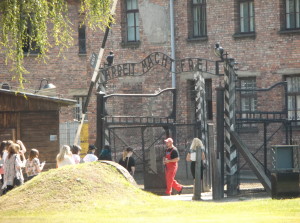
At perhaps the most well known of all concentration camps, Auschwitz – Birkenau was perhaps the most impactful of our experiences in Poland. We started the day at Auschwitz I, which was as much of a museum as it was a complete picture of what life was like there. Entering through the iconic gates that say “work will set you free”, we saw exhibits detailing the vast distances people were transported to get to the camp, as well as a picture of the different bunking conditions throughout the camp’s history (in case you were wondering, inmates started out sleeping on straw, which were later “upgraded” to mats, and eventually bunks, which were still extremely overcrowded).
We entered the new Jewish building, which focused on the lives of individual Jews before and during the war. The first room was filled with projections on the walls filled with videos, many homemade, of Jews with their families and friends. Upstairs, we entered the propaganda room, which displayed speeches from various Reich leaders translated on a series of screens demonizing the Jewish people. The next room was a simple design, with real children’s artwork drawn like pencil sketches on white walls from pre-war times. It was heartbreaking to imagine all of the young lives lost, and the potential they had to change the world wasted. The last room was the hall of names, where they had listed in a giant book like display the known names of 4 million+ that perished in the holocaust.
As we left the building, our guide Jules so poignantly stated, “When Jews arrived at Auschwitz, their names were replaced by numbers. It’s exhibits like this, and people like you, that give those who perished their names back.”
Birkenau was another experience entirely. This enormous death and labor camp, which had 4 crematorium, is quickly deteriorating to the point that if preservation measures aren’t enacted soon, any remaining structures may be reduced to rubble as many structures already have.
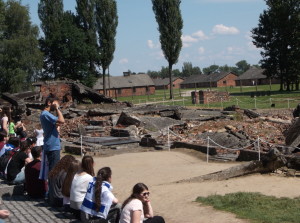
We grow up learning about the holocaust, and are told to never forget, but it’s not until the fragility of human life and remnants of the holocaust are experienced can we really gain an understanding for the importance and urgency of holocaust education.
We must teach. We must experience. We must teach the value of human life to our children. And we must never forget.
Synagogues, Synagogues, Synagogues
Thursday was a day filled with travel and synagogues. We started our day by traveling to the Temple Synagogue in Krasnik, where we davened shacharit in the old, run down synagogue.
After a moving service where we brought Judaism back to a town where there were no Jews left, we headed on a 4 hour drive to Krakow. On the ride, we watched the moving movie Schindler’s List, which recounts the heroics of Oskar Schindler, a Nazi who saved the lives of some 850 Jews in Krakow by working them in his factory, exchanging his fortune for their lives. We later would get to see his factory in person.
Upon arriving, we walked through the Krakow ghetto to the Izaak Synagogue, named for Izaak Jakubowicz, also called Isaac the Rich, the donor and also a banker to King Władysław IV. We learned about the history of the synagogue, and I had the opportunity to teach Rabbi Shlomo Carlebach’s Krakow Niggun. The power of being able to bring back a melody to its place of origin, in a beautiful acoustic inside of an ancient synagogue, was extremely moving. Others who were visiting the synagogue stopped to listen, and some even recorded it on their phones.
We visited a few more synagogues (see pictures below) and headed to our hotel for the night.
We wrapped up the day with Ma’ariv and subgroups, where we had private journal time.
More pictures to come.
Israel!
Our time in Poland ended Monday night, but it was after an eventful and moving day.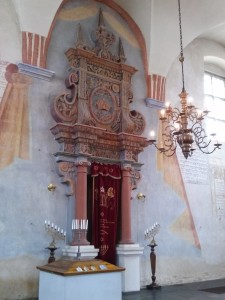
We started Monday by davening at the Tykochin synagogue, where Jews once prayed in this thriving shtetl, and then made our way to the Lupochova Forest, where the Jews of Tykochin and some surrounding villages were marched, told to line up along pits, shot by a firing squad, and then buried in mass graves. Three graves were dug, and there are memorials now that recognize those who were murdered.
Our time in Poland ended at the Treblinka death camp, which was completely destroyed by Nazis as the war was coming to a close. While no physical structures remain from the camp, there are a number of memorials in the places where the different buildings used to be, as well as a huge expanse that is covered in large symbolic rocks to memorialize the 800,000-120,000 that were were murdered there. Some of the rocks recognize particular towns where many Jews were brought from.
We had a ceremony led by the Usyers, where they read selected readings and poems that were moving to them, and we ended by singing Hatikvah, The Hope, that one day we might be free to live in peace in our holy land. We surprised the Usyers by giving them letters that their parents had written to them specifically for this occasion, and it was extremely moving to see the emotions they felt and the thought of what might be contained within those letters even brought tears to my eyes. Some found out they had family who at one time lived in different towns in Poland, and tried to find those names written on the stones.
Monday night, we left for Israel, and arrived Tuesday only to find that 15 of bags, as well as some 90+ Ramah bags, were not put on the plane. We had an emergency shopping trip for those of us (including me) who did not have their suitcases, and overall had a pretty relaxing first day.
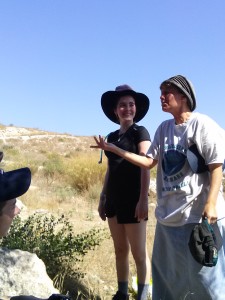
Wednesday was our first full day in Israel. We started the day with an archaeological dig at Tel Maresha, where we helped excavate a real historical site. Due to the extreme number of potential archaeological sites in Israel, archaeologists often use volunteers and tour groups to help them in their excavating. We were able to find a number of pottery shards, animal bones, and even some charcoal. It was a really cool activity, and the archaeology loving boy in me had a ton of fun.
We then went for a swim in the pool at Beit Guvrin, which was exactly what was needed for a 90 degree+ day. The day ended with a seminar on the Arab-Israeli Conflict with Neil Lazarus.
Today, Thursday, we started our learning about ancient times with exploration of the second Temple period. We started the day exploring the Southern Wall of the Temple, and learning about the daily life at the Temple, and stopped into the Davidson center for a break and a movie explaining more about life in the second Temple period.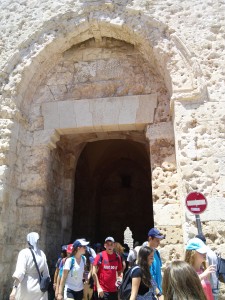
We briefly greeted the Kotel, or the Western Wall, and the USYers had a chance to write notes if they wanted. We explored the remnants of the Herodian mansions that lie underneath the streets of the old city, and learned about the warring factions of the time, the Sadducees and the Pharisees.
Our day trip ended with a visit to the Israel Museum, where we saw the Heliodorus Stele, an ancient document written on stone from around the time of the Maccabees that was actually found at Tel Maresha. We continued to see a few more artifacts, browsed the Shrine of the Book containing the Dead Sea Scrolls, and saw the giant model of Herodian Jerusalem.
I had some free time in the afternoon where I got to catch up with some friends in Israel, and it was really great to see them. We ended the day with a trip to Ben Yehuda Street, where Gonen, one of my co-staff, showed me some great places to shop and eat for the future.
A few more days in the Jerusalem area, and then we’re off to see the rest of Israel! More to come soon!
Israel: Weekend #1
I last checked in with you fine folks a week ago Thursday, when Operation Protective Edge was just a seedling. Since it has become a full fledged operation, but that hasn’t stopped our ability to see Israel and enjoy the land.
Last Friday was the first Friday of Ramadan, and as such, there were many protests and at times physical riots in the East Jerusalem neighborhood. As safety is our primary concern, we changed what was supposed to be an day exploring the First Temple period in Jerusalem to a hike and exploration of the terrace farming system that dated back to the time of First Temple in the surrounding Jerusalem area. We also explored a few water caves in that area.
We had a wonderful lunch, and headed back to Jerusalem to give the USY’ers some time to explore Machane Yehuda, and to buy gifts for their Shabbuddy (Shabbat Buddy). I went and found my coke in a glass bottle (my favorite), and bought some fresh chocolate rugelach.
We welcomed Shabbat as a group by davening at Yemin Moshe, overlooking the old city of Jerusalem. We had a very nice Kabbalat Shabbat and Ma’ariv, and headed back to our hostel for Shabbos dinner. As was my tradition when I was a madrich at Herzl, I told those sitting around me a story on Shabbos evening, this time the story of Yossele the Holy Miser (a Carlebach story, of course). After dinner, we sang a spirited ruach session, and went to bed for the night.
The next morning I took a group of kids to daven at the Great Synagogue. Not sure who the Hazan was, but from what I could understand it was a different one than usual, and there was no choir, which I understand they also usually have, but it was still a nice service, and the shul is absolutely beautiful. Their ark alone had something like 20 Torahs in it, from what I could count.
Services ended very early, so instead of free time, I told our group to grab any food they might have, and meet up on the balcony, where we had a nice oneg and traded off telling our favorite Jewish stories. We also sang some, and as other groups returned from davening, they joined us as well.
We had kiddush at Rabbi Paul Friedman’s apartment, and both he and his lovely wife welcomed our group into their home with food, stories, and a kiss on the cheek for each of us. We returned for lunch, ruach, and some much need Minuha (rest time). During the afternoon free time, I took a group of kids to throw a disc around the near by park. It was nice to have a Frisbee back in my hands again. We concluded the night with Pirkei Avot study, mincha, dinner, more ruach, and havdallah.
Sunday, we visited Yad L’Kashish, where elderly people are given food and housing to make a variety of wonderful Judaic products. While touring the factory, our kids interacted with the elderly, making conversation in Hebrew, English, and even Spanish. They took pictures with some of the workers, and to see the smiles on both the USY’ers faces and the elderly’s faces was truly heartwarming.
We spent the afternoon touring Yad Vashem, Israel’s Holocaust Museum. While the museum is always meaningful, I, and many of the USY’ers, found it hard to concentrate and find meaning in it, especially when we had experienced and learned about many of the sites in person the previous week. While it would have been a great way to summarize our experience when we first arrived in Israel, doing at the end of the first week lost some of its power and meaning.
We then spent Sunday afternoon heading south.
While I have so much more to catch up on, alas, I’m running out of time before Shabbat, so I’ll have to finish updating you all another time!
Have a quiet and peaceful Shabbat!
SHUL REVIEW: Moreshet Yisrael (Friday)
Rating: 3/5- Typical American Conservative service, with participation in the service likewise
Service Attended: Friday Night Services
Date: 8/29/2014
About: Fully Egalitarian, Masorti (Conservative) congregation
Time of Service: 6:45pm Friday night
Mechitza: None, people can sit wherever
Women: Full participation
Sermon: English on Friday Night, Hebrew (same sermon) on Saturday Morning
Meals: No mention of offers to set people up
Frequency: Weekday mornings, every Friday night, Saturday Morning
Family friendly service: Yes, Rabbi gave out treats to the younger kids present.
Review: Moreshet Yisrael is one of the only fully egalitarian, Masorti (Conservative) synagogues in Israel. The space is beautiful, but unfortunately acoustically lacking. On the evening I was there, there were around 30 people, which is around 1/4 of the total size of the synagogue, so it was also lacking in the energy necessary to fill the space fully.
As such, it was a typical American Conservative shul in many ways. Seating was spacious, and prayers mumbled or quietly sung in contrast to the typical Israeli loud kavanah. They used a guitar (and a tambourine) for Kabbalat Shabbat, and put it away for Ma’ariv. The shlichei tzibur led a very nice service, but they were largely on their own in the davening.
In the end, if you’re looking for a place that resembles a service back home where men and women participate equally and can sit together, check out Moreshet Yisrael.
Moreshet Yisarel is located at 4 Agron Street, Jerusalem, as part of the Fuchsberg Center Complex. For more information, visit their website.
SHUL REVIEW: Beit Yisrael at Yemin Moshe- Ashkenazi (Saturday Morning)
Rating: 5/5- Friendly, with good kavanah and harmony, and an excellent kiddush
Service Attended: Saturday Morning Services
Date: 8/30/2014
Observance: Orthodox
Time of Service: 8:15am-11am Saturday Morning
Mechitza: To left of men’s section, shaliach tzibur in the middle of men’s section. Sizable women’s section
Women: No leadership
Meals: Known for its kiddush after the meal, which was very nice. No mention of meals at the service, but their newsletter says to email Valerie Adler to request a meal
Frequency: Weekday Shacharit, every Friday Night, Saturday Morning, and Saturday evening
Family friendly service: While there were families, there weren’t too many, and were not a focus by any means
Sermon: English sermon, announcements in Hebrew and English
Review: Beit Yisrael, also known as the Ashkenazi shul at Yemin Moshe, was one of my favorites so far. Great combination of kavanah and harmony, and the voices beautifully filled the space. I went with a female friend (who is conservative), who also enjoys it there. Many English-speaking people daven there, so it can feel very homey for the English speaker.
English sermon, with Hebrew and English announcements. Very friendly people, and I was invited to join them for High Holidays by one of the leaders of the congregation after the service. The highlight is definitely the kiddush afterwards, which had a number of delicious treats, a great lasagna, and some tuna and egg salad.
Come for the food, get some great davening to boot. I definitely recommend Beit Yisrael.
Beit Yisrael is located at 2 Pele Yoetz Street, Yemin Moshe, Jerusalem. There are signs pointing you to the Ashkenazi shul when you get into Yemin Moshe. For more information, visit their website.
